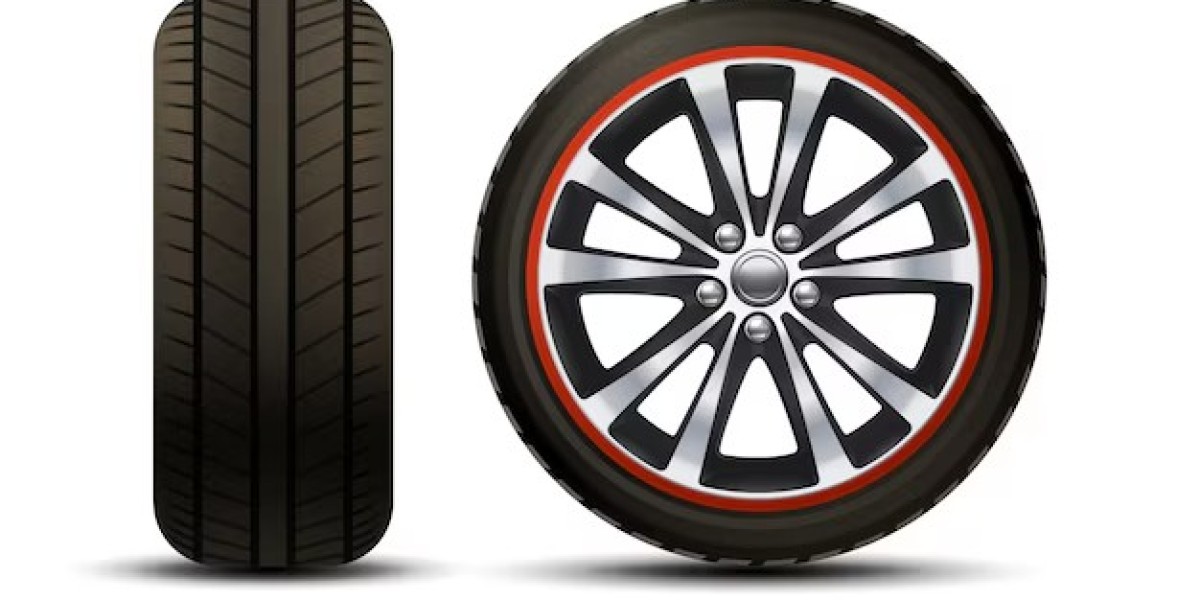In the digital age, the convenience of shopping from the comfort of your own home has extended to virtually every product imaginable, including tyres. Buying tyres online has become a popular option for many drivers, providing a hassle-free way to find the perfect fit for your vehicle. This comprehensive guide will walk you through everything you need to know about purchasing tyres online, from understanding tyre specifications to choosing the right type for your driving needs.
Why Buy Tyres Online?
The advantages of buying tyres online are numerous. Here are some key benefits:
Convenience: Shopping for tyres online allows you to browse a wide variety of options without leaving your home. You can compare prices, read reviews, and make an informed decision at your own pace.
Variety: Online retailers often have a larger selection than physical stores. This means you're more likely to find the specific tyres you need, whether they're for a common sedan or a rare sports car.
Competitive Pricing: Online stores frequently offer competitive prices and promotions that you might not find in brick-and-mortar shops. This can result in significant savings.
Customer Reviews: Reading reviews from other customers can provide valuable insights into the performance and durability of different tyre models, helping you make a better-informed choice.
Understanding Tyre Specifications
Before diving into the world of online tyre shopping, it's essential to understand the key specifications that define a tyre. Here's a breakdown of the most important factors:
Tyre Size
Tyre size is indicated by a series of numbers and letters found on the sidewall of the tyre. For example, 205/55R16 91V. Here's what each part means:
205: The tyre's width in millimetres.
55: The aspect ratio, which is the height of the tyre's sidewall as a percentage of the width.
R: Radial construction.
16: The diameter of the wheel rim in inches.
91: The load index, indicating the maximum load the tyre can support.
V: The speed rating, indicating the maximum speed the tyre can safely handle.
Tyre Type
There are several types of tyres, each designed for different driving conditions:
Summer Tyres: Optimized for warm weather, offering excellent grip and handling on dry and wet roads.
Winter Tyres: Designed for cold conditions, with tread patterns and rubber compounds that provide better traction on snow and ice.
All-Season Tyres: A versatile option that performs adequately in a variety of conditions but may not excel in extreme weather.
Performance Tyres: Built for high-speed stability and precise handling, often used in sports cars.
Off-Road Tyres: Engineered for rough terrains, providing enhanced durability and traction.
How to Choose the Right Tyres for Your Vehicle
Selecting the right tyres involves considering your driving habits, the climate in your area, and your vehicle's specifications. Here are some tips to help you make the right choice:
Assess Your Driving Needs
Think about the typical driving conditions you encounter. If you mostly drive in urban areas with well-maintained roads, all-season tyres might be sufficient. However, if you frequently drive in snowy or icy conditions, investing in winter tyres is advisable.
Check Your Vehicle's Requirements
Refer to your vehicle's owner manual for recommended tyre sizes and types. Sticking to these guidelines ensures optimal performance and safety.
Consider Your Budget
While it might be tempting to go for the cheapest option, investing in high-quality tyres can save you money in the long run by providing better fuel efficiency, longer tread life, and enhanced safety.
Buying Off Road Tires: What You Need to Know
For those who enjoy venturing off the beaten path, off road tires are a must. These tyres are designed to handle rugged terrains, providing the traction and durability needed for off-road adventures. Here’s a closer look at what to consider when purchasing off-road tires:
Types of Off Road Tires
All-Terrain Tyres (A/T): These are versatile tyres suitable for both on-road and off-road driving. They offer a balanced performance with good traction on various surfaces.
Mud-Terrain Tyres (M/T): These tyres have aggressive tread patterns designed for muddy and rocky terrains. They provide excellent grip but can be noisier and less comfortable on paved roads.
Rock-Crawling Tyres: Specifically designed for rock climbing, these tyres have reinforced sidewalls and deep treads to grip rocky surfaces.
Sand Tyres: Built for desert and beach driving, these tyres have paddle-like treads that prevent the vehicle from sinking into the sand.
Key Features to Look For
Tread Pattern: The tread pattern is crucial for off-road performance. Look for tyres with deep, wide treads that can dig into soft surfaces and provide good self-cleaning capabilities.
Sidewall Strength: Off-road driving exposes tyres to sharp rocks and debris. Tyres with reinforced sidewalls offer better puncture resistance.
Load Rating: Make sure the tyres can handle the weight of your vehicle, especially if you're carrying heavy gear.
Size: Larger tyres can provide better clearance and traction, but ensure they fit your vehicle without causing rubbing or other issues.
The Buying Process: From Search to Installation
Now that you know what to look for, here’s a step-by-step guide to buying tyres online:
Step 1: Research
Start by researching different brands and models. Websites like Tire Rack, Discount Tire, and Amazon offer a wealth of information, including customer reviews, expert ratings, and detailed specifications.
Step 2: Compare Prices
Once you've narrowed down your options, compare prices across different online retailers. Don’t forget to factor in shipping costs and any potential discounts or promotions.
Step 3: Verify Compatibility
Double-check that the tyres you're considering are compatible with your vehicle. Most websites allow you to enter your vehicle's make and model to filter compatible options.
Step 4: Place Your Order
When you're ready, place your order. Make sure to provide accurate shipping information and select any additional services you might need, such as professional installation.
Step 5: Installation
You have a few options for installation:
Local Tyre Shops: Many online retailers partner with local tyre shops for installation. You can have the tyres shipped directly to the shop, and they’ll handle the rest.
Mobile Installers: Some services will come to your home or workplace to install the tyres, providing maximum convenience.
DIY Installation: If you have the necessary tools and skills, you can install the tyres yourself. However, this is generally not recommended unless you’re experienced.
Maintenance Tips for Prolonging Tyre Life
Proper maintenance is key to getting the most out of your tyres. Here are some essential tips:
Regular Inspections
Check your tyres regularly for signs of wear, damage, and proper inflation. Look for any cuts, punctures, or bulges that could indicate a problem.
Proper Inflation
Keeping your tyres properly inflated is crucial for safety and longevity. Under-inflated tyres can cause excessive wear and reduce fuel efficiency, while over-inflated tyres can lead to a harsh ride and increased risk of blowouts.
Wheel Alignment and Balancing
Ensure your wheels are properly aligned and balanced to prevent uneven tyre wear. Misalignment can cause the vehicle to pull to one side, leading to faster wear on one edge of the tyre.
Rotation
Rotate your tyres every 5,000 to 7,000 miles to ensure even wear. This helps extend the lifespan of your tyres and maintain consistent performance.
Environmental Considerations
Tyre production and disposal have significant environmental impacts. Here are some ways to reduce your ecological footprint when buying and using tyres:
Choose Eco-Friendly Tyres
Some manufacturers produce eco-friendly tyres made from sustainable materials and designed for lower rolling resistance, which improves fuel efficiency and reduces carbon emissions.
Proper Disposal
When it’s time to replace your tyres, make sure to dispose of them properly. Many tyre shops and recycling centres accept old tyres and ensure they’re recycled or disposed of in an environmentally friendly manner.
Conclusion
Buying tyres online can be a convenient and cost-effective way to ensure your vehicle is equipped with the best tyres for your driving needs. Whether you're looking for everyday all-season tyres or specialized off road tires, understanding your options and knowing what to look for can make the process much smoother. Remember to consider your driving habits, vehicle requirements, and budget when making your choice, and always prioritize safety and quality. With the right tyres, you'll enjoy a smoother, safer, and more efficient driving experience.









